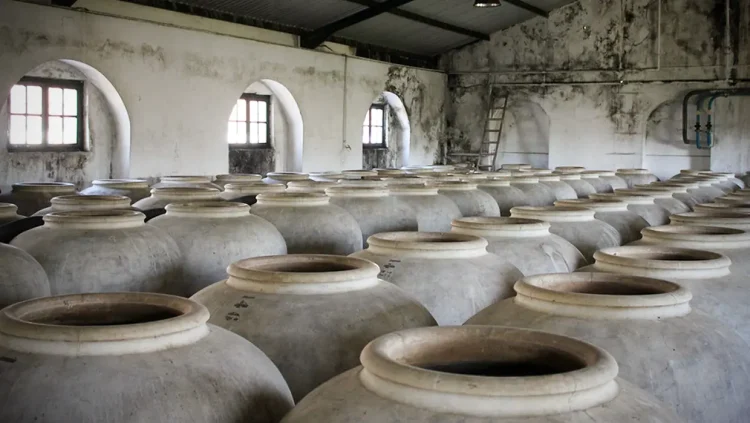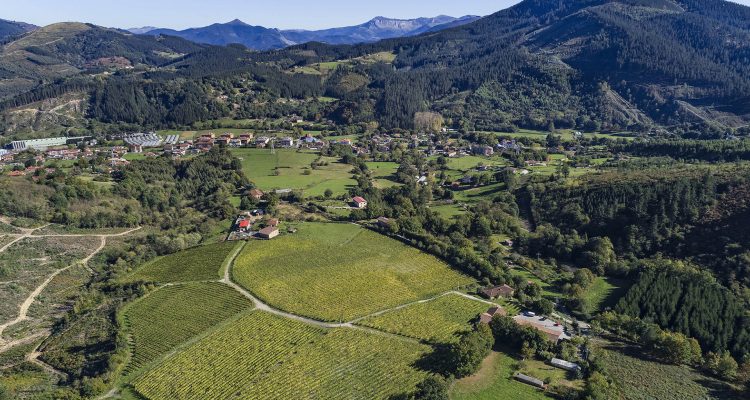Did you know there’s an association of the top 34 single-estate wines in Spain? White and red, still and sparkling: these are definitely wines worth knowing. Last month, they sent a selection of their wines to Boston for us to sample. (See below for tasting notes.)
Grandes Pagos de España [GPE] is the name of the single-estate wines organization – pagos being the Spanish word for vineyards. The group was established 25 years ago with five vineyards, and it’s been growing steadily since, adding estates from all parts of Spain. Many of the wineries have wine bars with a variety of wine tasting options; one even has a luxury hotel and spa. When you visit any of the 34 wineries, you can taste other GPE wines there, too.
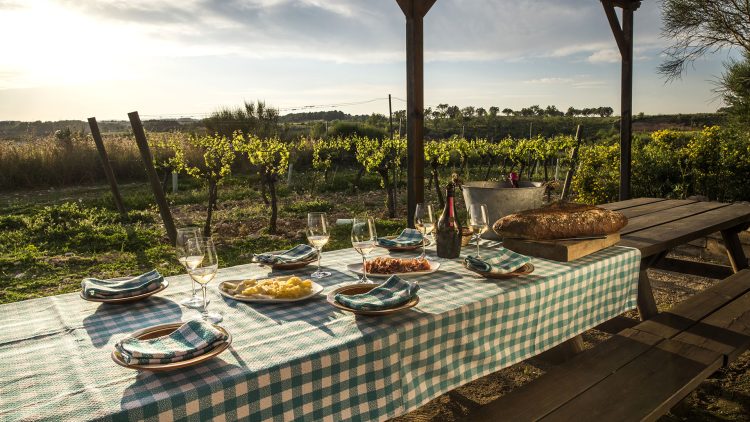
For each GPE wine, all the grapes must be grown on the estate where the wine is produced. Any grapes or wine from an adjacent land or anywhere else cannot be used in these wines, whether or not this has been the tradition in that particular region. Today GPE wineries produce about five million bottles a year, using 60 different grape varieties.
Slightly confusing: in 2003 the Spanish government created its “Pago” wine designation, which functions outside of the regionality of the DO and DOP wine accreditation systems. In other words, a single-estate wine from anywhere in Spain can earn a Pago designation, no matter what region it’s in. Currently, there are 24 official Pago-labeled wines in Spain. This is fewer than in the Grandes Pagos de España Association; perhaps the remaining vineyards are applying for this status in the Spanish wine system? Also, I did wonder how the GPE members evaluate the quality of their wines. It turns out they have created their own impartial “External Committee of Expert Tasters.” Makes sense.
Ever desirous of improving their wines, members of Grandes Pagos de España rely on their “Knowledge Network” to exchange best practices and disseminate new processes among their members, as well as to monitoring research and arranging visits with a variety of wine producers. Other committees in the organization include wine production and industry training, world-wide ambassadors and sustainability.
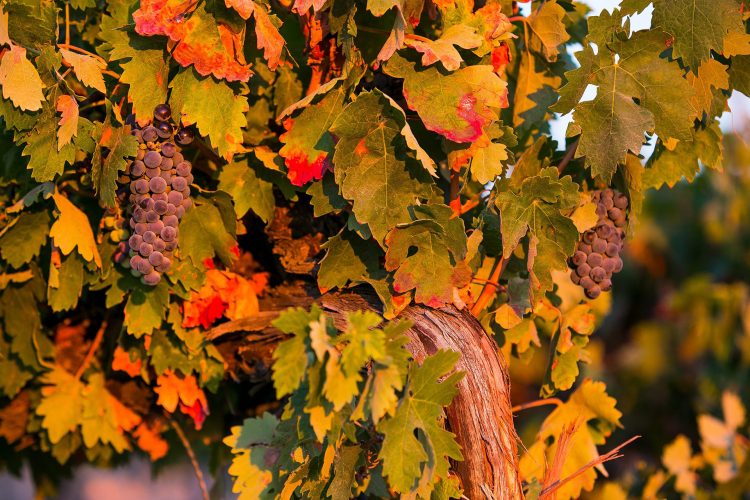
Here are several standout wines I sampled, all from wineries with interesting stories.
We began with a sparkling wine from Gramona in northeast Spain, west of Barcelona. Their winery received the European award for Sustainable Architecture 2001. The family has been growing grapes for over 140 years, and making wine for most of that time; the fifth and sixth generation are now in charge. Their commitment to sustainability includes 100% renewable electric power and continual reductions in emissions and carbon footprint. The sparkling 2107 Gramona Imperial Brut Eco Corpinnat is grown in vineyards that are biodynamic and Demeter-certified. The wine is made with traditional grapes used for sparkling wine in this part of Spain: xarel-lo, macabeu, parellada and chardonnay, and it is aged four years before release. The aroma is honeyed and biscuity, transitioning on the palate to honey and apples with minerality. It has a good balance of fruit and zings of acidity, retaining hints of apple through its long finish.
Mustiguillo is located in southeast Spain, inland from Valencia. This winery has historically been known for championing the indigenous bobal grape. But the 2021 Finca Calvestra I sampled is a white wine made another indigenous grape:100% merseguera, which is grown on old, traditional bush vines in an organic, non-irrigated vineyard. The wine has floral notes, sweet fruit and a bit of nuttiness. Acidity and wood contribute to the complex flavors and structure, lifted by a hint of chalkiness, and enhanced with a long finish.
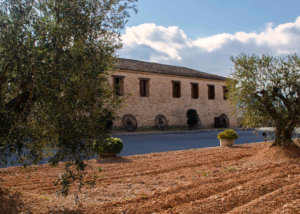
Abadía Retuerta, a12th century “abbey by the curve in the river,” is now a sustainably managed winery with a five-star hotel and spa, on the Douro River just east of Valladolid, where they produce multi-award-winning wines. Before I learned any of this, I sampled the 2016 Pago Negralada: 100% tempranillo, aged for 16 months in French oak barrels, some new, some used. This is an exceptional wine, fully mature now. It looks and tastes vibrant and intense, even eight years after harvest. Dark red fruit tones mesh with wood and cocoa notes – cocoa especially on the end-palate – and integrate beautifully with strong, polished tannins.
Who could resist a winery named after seven castles? Secastilla is named for the Aragonese castle fortresses that protected this area centuries ago; their ruins exist today. It is located right where Spain’s Mediterranean-influenced climate dissipates before the foothills of the Pyrenees. This is a historic region for garnacha [grenache] cultivation, with high-altitude vineyards over 2000 feet. Secastilla winery also protects nearby wildlife habitats. The 2016 Secastilla Somontano I tasted was made from 100% old vine red grenache grapes grown in dry-farmed, low yield vineyards where all the work is done by hand. The wine is polished and evokes concentrated strawberry aromas and flavors. A silky mouthfeel still allows for some crunchiness around the edges from the well-integrated, structural tannins.
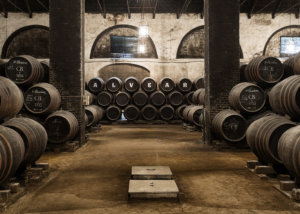 One of the fastest growing styles of wine in Spain comes from Andalusia in the south. In addition to the dry and sweet (fortified) sherries, non-fortified wines are now being crafted in and around the Jerez (sherry) district. For centuries, Bodega Alvear has specialized in wines made with the Pedro Ximénez [PX] grape; the winery was established in 1729, south of Córdoba. Though PX is a white grape, traditionally it is made into a dark, luscious, dessert sherry that is great for sipping or even pouring over ice cream. Recently, the winemakers at Bodega Alvear decided to make a dry white wine with Pedro Ximénez grapes, and the 2021 Tres Miradas Vino de Pueblo has turned out wonderfully. Grown in the typical albariza (white clay) soil of the region, the grapes are hand-harvested, fermented in temperature-controlled containers, then aged in amphora-like clay containers above ground, called tinajas. A small top opening does allow for a thin, natural surface of (sherry-style) flor. The wine itself is bright with a tinge of nuttiness in the flavor, with a citric end-palate and finish.
One of the fastest growing styles of wine in Spain comes from Andalusia in the south. In addition to the dry and sweet (fortified) sherries, non-fortified wines are now being crafted in and around the Jerez (sherry) district. For centuries, Bodega Alvear has specialized in wines made with the Pedro Ximénez [PX] grape; the winery was established in 1729, south of Córdoba. Though PX is a white grape, traditionally it is made into a dark, luscious, dessert sherry that is great for sipping or even pouring over ice cream. Recently, the winemakers at Bodega Alvear decided to make a dry white wine with Pedro Ximénez grapes, and the 2021 Tres Miradas Vino de Pueblo has turned out wonderfully. Grown in the typical albariza (white clay) soil of the region, the grapes are hand-harvested, fermented in temperature-controlled containers, then aged in amphora-like clay containers above ground, called tinajas. A small top opening does allow for a thin, natural surface of (sherry-style) flor. The wine itself is bright with a tinge of nuttiness in the flavor, with a citric end-palate and finish.
